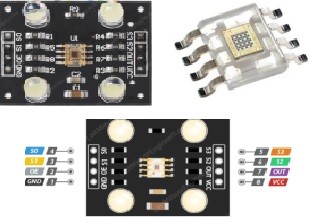Nurturing Agribusiness: A Sustainable Farming System for Tomato Crop Management Leveraging Machine Learning
Main Article Content
Abstract
The agriculture industry is undergoing a transformative shift with the introduction of IoT technology, enabling global connectivity for farmers. This technology offers a plethora of advantages, ranging from precise seed selection based on soil analysis to efficient crop maintenance, water management, and enhanced marketing support for improved profitability. To further enhance tomato farming practices, we propose the implementation of a smart farmer marketing assistant that streamlines the process of segregating yield based on its growth stage, reducing labor and time requirements.Further, the frame work is capable of early-disease management system that can detect diseases like early blight,light blight, buck eye rot and anthranose and suggest remedy. By adopting this innovative approach, financial losses associated with traditional methods are minimized.The traditional practice of combining all categories of vegetables (ripened, unripened, and partially rotten) in a single container often results in reduced shelf life for the produce. In our framework, we employ color sorting to categorize the vegetables, ensuring proper packing into their respective bins. This valuable data is made accessible through a cloud environment, providing potential buyers with comprehensive information about the yield, its category, and pricing. This increased visibility empowers farmers to reach a global market and sell their produce at competitive prices.
In this context, we present a case study focused on the tomato crop, where we have successfully developed a prototype utilizing ESP32, a color sensor, and Google Firebase. This comprehensive framework effectively harnesses the power of IoT, Machine Learning, and potential marketing strategies, transforming the way farmers manage their crops and connect with buyers on a global scale with highly accurate 87.9% experimental results.
Article Details
References
Mallikarjuna Rao et al (2021), Smart Web Investigation Framework. In: Innovations in Cyber Physical Systems. Lecture Notes in Electrical Engineering, vol 788. Springer, Singapore.
Latha, S. ., Gundavarapu, M. R. ., Kumar, N. P. ., Parameswari, D. V. L. ., & Reddy, B. R. K. . (2023). Technology for Kisan Samanvayam: Nutrition Intelligibility of Groundnut Plant using IoT-ML Framework. International Journal on Recent and Innovation Trends in Computing and Communication, 11(3), 273–282. https://doi.org/10.17762/ijritcc.v11i3.6345
Paradiso VM et al., “Nutritional characterization and shelf-life of packaged microgreens” Food Funct. 2018 Nov 14; 9(11): pp 5629-5640.
EL-Mesery et al., “ Statistical interpretation of shelf-life indicators of tomato (Lycopersicon esculentum) in correlation to storage packaging materials and temperature”, Food Measure 16, pp 366–376(2022).
A. Tendolkar et al., “ CareBro (Personal Farm Assistant): An IoT based Smart Agriculture with Edge Computing”, Proc. Third International Conference on Multimedia Processing, Communication & Information Technology (MPCIT), pp. 97-102,2020.
Jajam, N. ., & Challa, N. P. . (2023). Customer Churn Detection for insurance data using Blended Logistic Regression Decision Tree Algorithm (BLRDT). International Journal of Intelligent Systems and Applications in Engineering, 11(1s), 72–83. Retrieved from https://ijisae.org/index.php/IJISAE/article/view/2479
Arko Chatterjee et al., “Green Sense, A Smart Assistant for Agriculture Management using IoT and Deep Learning”, Proc. 6th International Conference on Computing for Sustainable Global Development (INDIACom), 2019.
Emerson Navarro et al., “A Systematic Review of IoT Solutions for Smart Farming”, Sensors 2020, 20(15), 4231 (2020) ,
Ritika Srivastava et al., “A Research Paper On Smart Agriculture Using Iot”, International Research Journal of Engineering and Technology (IRJET), Volume: 07 Issue: 07.
Partha Pratim Ray, “Internet of things for smart agriculture: Technologies, Practices And Future Direction”, Journal of Ambient Intelligence and Smart Environments, 9 (2017) pp 395–420.
Y. Cho, K. Cho et al., “An Agricultural Expert Cloud For A Smart Farm”, Proc. Future Information Technology, Application, and Service, Lecture Notes in Electrical Engineering, Vol. 164, Springer, pp. 657–662, 2012.
T. Ojha et al., “Dynamic Duty Scheduling For Green Sensor-Cloud Applications”, Proc. of IEEE CloudCom, Singapore, 2014.
Dr. Bhushan Bandre. (2013). Design and Analysis of Low Power Energy Efficient Braun Multiplier. International Journal of New Practices in Management and Engineering, 2(01), 08 - 16. Retrieved from http://ijnpme.org/index.php/IJNPME/article/view/12
Yang et al., “Machine Learning Application for Predicting the Strawberry Harvesting Time”, Korean Journal of Agriculture science, vol. 46, no. 2, Institute of Agricultural Science, Chungnam National University, June 2019, pp. 381–393
Caldwell, B., Rosen, E. B., Sideman, E., Shelton, A., and Smart, C. 2005. Resource guide for organic insect and disease management. New York State Agricultural Experiment Station, Geneva NY
Mohit Agarwal, Abhishek Singh, Siddhartha Arjaria, Amit Sinha, Suneet Gupta, ToLeD: Tomato Leaf Disease Detection using Convolution Neural Network, Procedia Computer Science,Volume 167,2020
Midwest Vegetable Production Guide for Commercial Growers, 2008. Available online at: www.btny.purdue. edu/Pubs/ID-56 Raudales, R. E. and McSpadden-Gardener, B. B. 2008.
Deshpande, V. (2021). Layered Intrusion Detection System Model for The Attack Detection with The Multi-Class Ensemble Classifier . Machine Learning Applications in Engineering Education and Management, 1(2), 01–06. Retrieved from http://yashikajournals.com/index.php/mlaeem/article/view/10
Microbial biopesticides for the control of plant diseases in organic farming. The Ohio State University, publication HYG-3310-08. ohioline.osu. edu/hyg-fact/3000/pdf/HYG_3310_08.pdf
Sharma, S. K., Lilhore, U. K., Simaiya, S. & Trivedi, N. K. An improved random forest algorithm for predicting the COVID-19 pandemic patient health. Ann. Roman. Soc. Cell Biol. 12, 67–75 (2021)
Pérez, C., Pérez, L., González, A., Gonzalez, L., & Ólafur, S. Personalized Learning Paths in Engineering Education: A Machine Learning Perspective. Kuwait Journal of Machine Learning, 1(1). Retrieved from http://kuwaitjournals.com/index.php/kjml/article/view/107
Suo, J.; Zhou, C.; Zeng, Z.; Li, X.; Bian, H.; Wang, J.; Zhu, M.; Han, N. Identification of regulatory factors promoting embryogenic callus formation in barley through transcriptome analysis. BMC Plant Biol. 2021, 21, 145.
Isabella Rossi, Reinforcement Learning for Resource Allocation in Cloud Computing , Machine Learning Applications Conference Proceedings, Vol 1 2021.
Bahga, Arshdeep , Madisetti, Vijay, Internet of Things: A Hands-On Approach, University Press, 2014.

